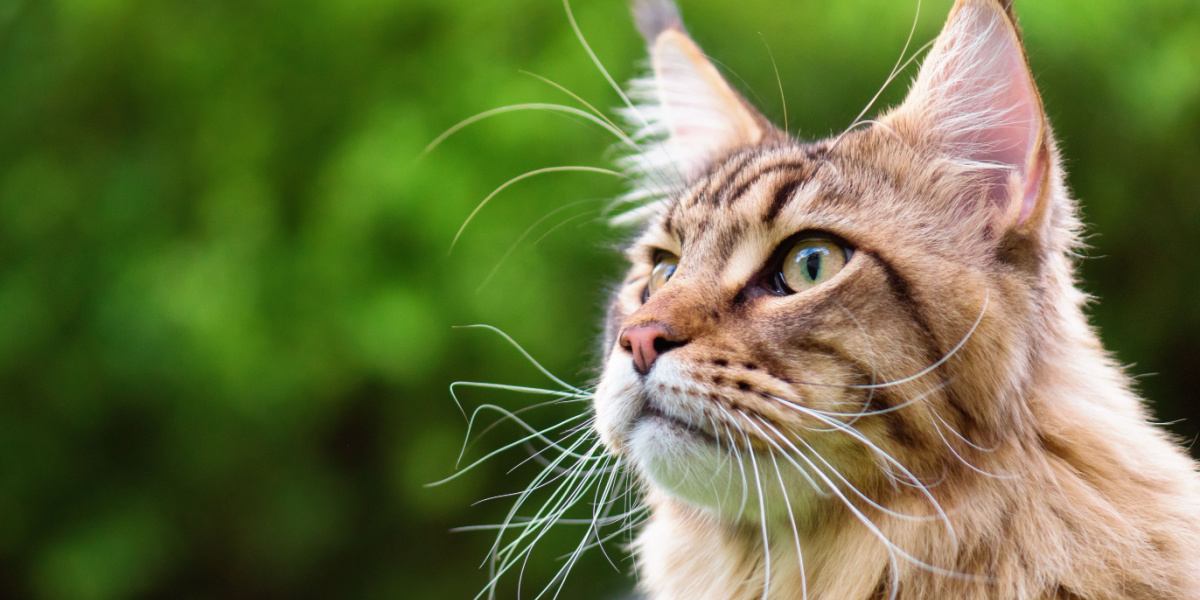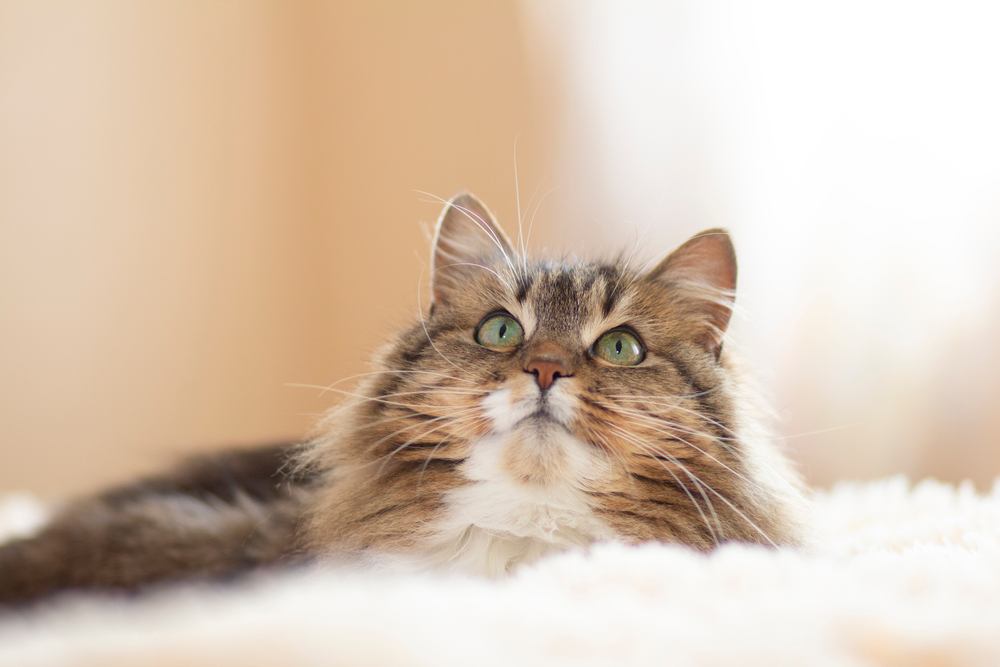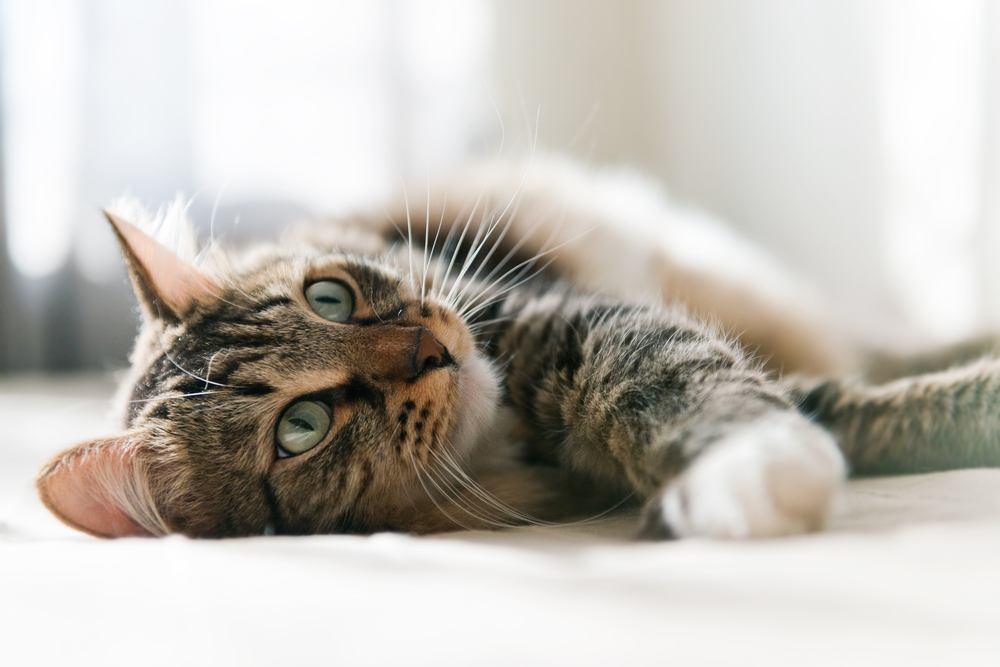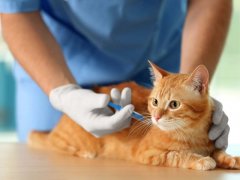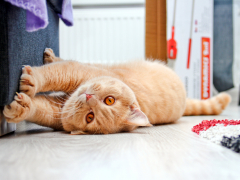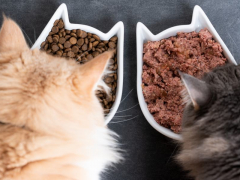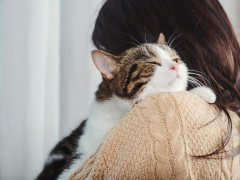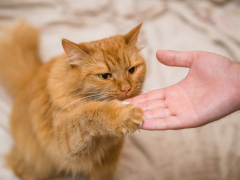Have you heard the saying about being “the cat’s whiskers?” It is meant to imply that you are better than those around you. This makes sense because there is an old wives’ tale that cat whiskers bring good luck. But is there any truth behind this? Read on to find out more about this peculiar but endearing folklore.
Cats are believed to be a sign of good luck in many cultures, and historically they were sometimes believed to possess magical powers. Cats' whiskers provide essential sensory input that helps guide your cat through their environment and protect them from danger. Cats will naturally shed whiskers on occasion, but they should not be cut or removed intentionally.Key Takeaways
Whiskers: What’s the Point?
Have you ever wondered how your cat is so agile? Or how they can squeeze through the tiniest of spaces? Well, their whiskers, or “vibrissae,” hold many of the answers. Cats’ whiskers are specially designed to reflect the width of their body; if their whiskers can get through, the rest should follow. Amazingly, this is why fluffy cats have longer whiskers – they are simply wider than sleek coated cats.
Whiskers help a cat detect how close an object is to their face and the airflow or direction of movement. Whiskers help cats judge whether they will fit into small spaces, which is a pretty nifty trick.
A cat’s whiskers are a huge part of their touch sensation. They provide ongoing and essential information about the cat’s environment, and cats rely on them constantly. Whiskers also help your cat balance in trickier circumstances, such as walking along a narrow fence. Even when your cat sleeps, a twitch of the whiskers might indicate imminent danger and wake them.
Not only that, researchers recognize that your cat’s facial expression and whisker position can communicate how they are feeling to other cats. The cat grimace scale is a validated scoring system. Changes such as whisker position can help humans determine when a cat is stressed or in pain.
Of course, this is all part of cat-to-cat innate communication. But it is a fantastic tool for cat parents and veterinarians alike. The more we understand our cat’s feelings and emotions, the more we can meet their needs and deepen our relationship with them.
Also Read: 10 Surprising Facts About Cat Whiskers
What’s the Origin of Lucky Whiskers?
Cats have been revered by many cultures for millennia. Dating back as far as the ancient Egyptians, cats were held in such great esteem that those fortunate enough to own one were believed to be blessed with good luck. Ancient Egyptian cat owners would dress their beloved cats in jewels and mummify them when they died.
However, killing a cat, even by accident, was a mortal sin, and cat families would mourn their loss deeply and for many weeks. The Egyptian goddess Bastet, a half-woman and half-cat diety, was the goddess of good health, pleasure, and protection – all one might hope for in life.
The waving golden cat ornament often seen in Chinese shops is called Maneki Neko, and has surprising origins in Japanese legend. It is said that a cat saved a prestigious ruler from a lightning bolt many centuries ago. More practically, in the middle ages, cats protected grain stores from rodents and, as hunters, were the only animal allowed in monasteries.
Cats have often historically been considered a valuable asset to their keepers. In fact, it is hard to find a culture where the cat is not considered a prized possession or a lucky charm in some way or another. So it follows that cat whiskers are a portable good luck charm bestowing fortune on the beholder.
Unfortunately, during the 16th-century witch trials, cats fell out of favor and became a symbol of paganism in a heavily Christian Europe. The association of cats with superstitions and bad luck is also seen in countries such as India, where a black cat crossing your path is viewed as a bad omen; however, in the UK, this is considered good luck.
Over the centuries, with the commercialism of Halloween and all things witch and wizard-related, cats are back in fashion, and their whiskers are a precious commodity.
Why Are Whiskers So Precious?
A fluffy cat has longer whiskers because they are wider, and need longer whiskers to help them navigate tight spots.
Let’s get back to biology: cats’ whiskers evolve through a growth and shedding cycle. This means that it is normal for one to fall out every now and then. Generally, your cat will shed a whisker every two months, just one or two at a time. The average cat will shed around six whiskers a year.
This is not so many. With our super-powerful vacuum cleaners and life’s general hustle and bustle, you may not even have realized that your cat was planting tiny quill-like treasures around your home.
Did you ever sit in a meadow as a child and hunt for a four-leaf clover? Or sit in the dark waiting for a shooting star? Much like a needle in a haystack, you rarely find them when looking for them. But such rare things are often honored with the badge of being a lucky charm.
Whiskers are no exception. Couple that with our historical love of felines, and you can see why finding a cat’s whisker is a special and rare moment. For those with cats in the family, whiskers are often cherished as a keepsake, much like a child’s teeth or first lock of hair.
When Is Whisker-Shedding a Worry?
As we mentioned, the occasional shedding of whiskers is completely normal. But if you notice that your cat’s whiskers are thinning or you find lots about your home, it could be a sign that something is wrong. Cats are known for molting hair when stressed, and whiskers are no different. They are sensitive creatures, and changes in their normal environment could trigger a physiological response.
Alopecia (hair loss) may happen spontaneously through natural loss or over-grooming. Hair and whisker loss can be caused by allergies, infections, and parasites. Occasionally, whisker loss results from hormonal disease, cancer, or other illness putting your cat under stress. Curiously, a recent study found that the presence of wavy whiskers is strongly correlated with the presence of feline leukemia virus.
What Should I Do With Fallen Whiskers?
You are probably reading this because you love cats, so of course you should keep them! In fact, you can make the most of these follicular gems in many creative ways. Felting mini cats is a cute and creative hobby, and adding real whiskers provides authenticity that is hard to beat. The same goes for collages and other arts and crafts. Leaving fur and whiskers out for nesting birds is a great way to give something back to your local wildlife.
Many online jewelers are crafting gifts and keepsakes from biological items. You might even happen upon a specialist in cat whiskers. Alternatively, you could keep them in a jar, pill pot, or pouch. Some people carry them in their pocket or car for extra luck as they journey through life. After all, if they are lucky charms, who would want to just throw them away?
Whiskers: A Keepsake With or Without Luck
While having a cat whisker for good luck is fun, whiskers should only be obtained if they have been shed naturally.
Cat whiskers bringing good luck is not just an urban myth; it is an ancient myth, and the truth relies on an individual’s values and beliefs. There is no scientific evidence backing up claims of whisker-induced good fortune. Still, for some, this is not an essential accolade.
For those with special felines in their life, it doesn’t really matter either way. A whisker is a tiny biological gift that can be kept to remember your cat for many years to come. There’s nothing more heartwarming than that.
Related Conditions:
Frequently Asked Questions
Is it OK to touch a cat’s whiskers?
Cat's whiskers are very sensitive and will detect the tiniest movements. In fact, a cat's whiskers are so sensitive that repeated touching (such as on the edge of a water bowl) can cause an overload of sensory information, which can cause your cat intense stress. This state of increased sensory stimulation is known as whisker fatigue.
So, while touching them won't harm your cat, you shouldn't need to, and your cat might not want you to. If you need to touch your cat's whiskers, do so with great care, only if necessary. If your cat initiates that touch, that's great; your cat loves interacting with you.
Is it OK to touch cut whiskers?
You should never cut your cat's whiskers – your cat needs them! Your cat relies on their whiskers to balance, navigate their way in the dark and react to predators. They are an integral part of your cat, and they won't thank you for depriving them of their essential sensory apparatus.
On rare occasions, there might be a medical reason to cut your cat's whiskers, but this should be performed by your veterinarian. And it's not just cutting whiskers; curling, dying, or tampering with your cat's whiskers is inappropriate and negatively affects your cat's well-being.
Can cats bring good luck?
Many cultures and religions dating back thousands of years believed that cats were lucky. But there is no scientific evidence that cats can bring you luck. So, it comes down to personal experience and the significance a cat holds in your life. If you have a cat in the family, then by default, you are lucky because cats are wonderful to have around!
Do Cat Whiskers Grow Back?
Yes! Cat's whiskers will grow back in time as long as the hair follicles are not damaged. This is the tiny area embedded in the skin, which the hair grows out of. If you are worried that your cat is losing whiskers and they are not growing back, speak to your veterinarian.
-
Evangelista, M.C., Watanabe, R., Leung, V.S.Y., et al. (2019). Facial expressions of pain in cats: the development and validation of a Feline Grimace Scale. Scientific Reports 9(1), 19128
-
Morishita, M., Sunden, Y., Horiguchi, M., et al. (2023). Wavy changes in the whiskers of domestic cats are correlated with feline leukemia virus infection. BMC Veterinary Research 19(1):58
